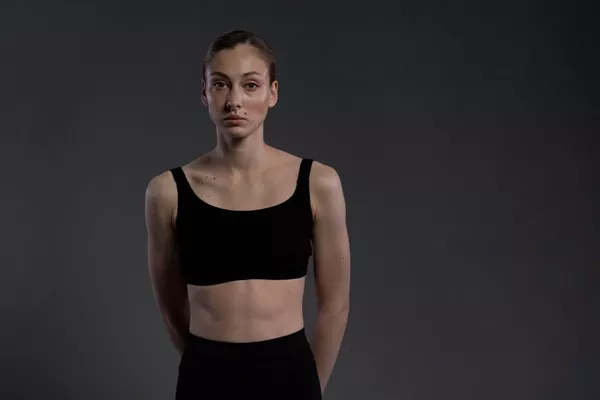When it comes to choosing an exercise regimen that promotes strength, flexibility, and mind-body connection, there are numerous options available. Two popular practices that have gained significant attention in recent years are hot yoga and Pilates. Both modalities offer unique benefits and cater to different aspects of fitness. In this article, we will delve into the characteristics of hot yoga and Pilates, compare their advantages and potential drawbacks, and help you make an informed decision about which practice may be better suited to your needs.
Understanding Hot Yoga
Hot yoga refers to a style of yoga practiced in a heated room, typically maintained at temperatures ranging from 95 to 105 degrees Fahrenheit (35-40 degrees Celsius) with increased humidity. The elevated temperature aims to enhance flexibility, promote detoxification through sweating, and potentially increase calorie burn during the practice.
Hot yoga classes can encompass various styles and sequences, such as Vinyasa flow, power yoga, or Hot Hatha. These classes incorporate traditional yoga poses, including Sun Salutations, standing postures, backbends, twists, inversions, and relaxation poses. The specific sequencing and style may vary depending on the teacher or yoga studio, allowing for diversity and customization.
One of the notable benefits of hot yoga is the ability to deeply stretch muscles and connective tissues due to the increased warmth in the body. The heat also helps to relax and calm the mind, promoting a sense of mental well-being and stress relief. Additionally, the combination of physical postures and controlled breathing cultivates mindfulness and improves overall mind-body connection.
Exploring Pilates
Pilates is a low-impact exercise method developed by Joseph Pilates in the early 20th century. It focuses on building core strength, improving flexibility, and enhancing body awareness and control. Pilates exercises are performed on a mat or specialized equipment, such as the reformer, Cadillac, or Wunda Chair.
Pilates workouts consist of precise movements that engage the deep stabilizing muscles of the core, including the abdominals, back, hips, and glutes. The exercises emphasize controlled and flowing movements, proper alignment, and breath coordination. Pilates aims to create balanced muscle development, improve posture, and enhance overall strength and flexibility.
One of the key principles of Pilates is the integration of mind and body. Concentration and focus are essential during each exercise, promoting mental clarity and mindfulness. Pilates also emphasizes the importance of breath control, facilitating coordinated movements and enhancing the mind-body connection.
Key Differences between Hot Yoga and Pilates
While both hot yoga and Pilates contribute to physical well-being and mind-body connection, there are distinct differences between the two practices:
Exercise Focus:
Hot yoga primarily focuses on flexibility, balance, and overall body conditioning through various yoga poses. Pilates, on the other hand, places a strong emphasis on core strength, stability, and alignment along with flexibility.
Heat vs. Equipment:
Hot yoga utilizes a heated room to promote increased muscle flexibility and detoxification through sweating. In contrast, Pilates uses specialized equipment like reformers, chairs, or mats to facilitate resistance and support proper body alignment.
Movement Style:
Hot yoga involves flowing sequences of postures, often synchronized with breath, emphasizing continuous movement and dynamic flows. Pilates exercises involve controlled and deliberate movements executed with precision, concentration, and fluidity.
Class Structure:
Hot yoga classes can vary in style and sequencing, depending on the instructor or yoga studio. Each session may offer different challenges and variations. Pilates classes typically follow a structured format with specific exercises or routines designed to target different areas of the body.
Community and Social Aspect:
Hot yoga classes often foster a sense of community, with practitioners coming together to share the experience of practicing in a heated environment. Pilates classes tend to be smaller and offer opportunities for individualized attention from the instructor.
Similarities and Benefits
Despite their differences, hot yoga and Pilates share several benefits:
Improved Strength and Flexibility:
Both practices contribute to increased strength, flexibility, and muscle tone. Hot yoga helps improve overall body conditioning and promotes deep stretching, while Pilates targets core muscles and enhances overall body alignment and flexibility.
Mind-Body Connection:
Both hot yoga and Pilates emphasize concentration, breath control, and mindful movement. They promote self-awareness, mental focus, and stress reduction.
Posture and Alignment:
Both practices can help improve posture and body alignment. Hot yoga enhances spine flexibility and muscular balance, while Pilates emphasizes core strength, stability, and proper alignment.
Injury Prevention and Rehabilitation:
Hot yoga and Pilates can be beneficial for injury prevention and rehabilitation. Hot yoga’s heat can aid in muscle relaxation and injury recovery, while Pilates focuses on strengthening the supportive muscles around joints, improving stability, and promoting proper movement patterns, which can help prevent injuries and aid in rehabilitation.
Conclusion
When considering whether hot yoga or Pilates is better for you, it’s important to understand the unique features and benefits of each practice. Hot yoga offers a dynamic and flowing sequence of poses in a heated room, promoting flexibility, detoxification, and mental well-being. On the other hand, Pilates focuses on core strength, alignment, and controlled movements, improving overall body awareness and stability.
Ultimately, the choice depends on your fitness goals, preferences, and individual needs. If you enjoy the meditative and spiritual aspects of yoga, desire increased flexibility, and prefer a dynamic movement practice, hot yoga may be a great fit for you. If you prioritize building core strength, improving posture, and enhancing body control and alignment, Pilates could be the better option.
Both hot yoga and Pilates offer valuable benefits such as improved strength, flexibility, mind-body connection, and injury prevention/rehabilitation potential. Consider trying both practices and consulting with qualified instructors to see which one resonates with you and aligns with your specific goals. Remember that maintaining consistency and enjoying the process are key factors in any successful fitness journey.


